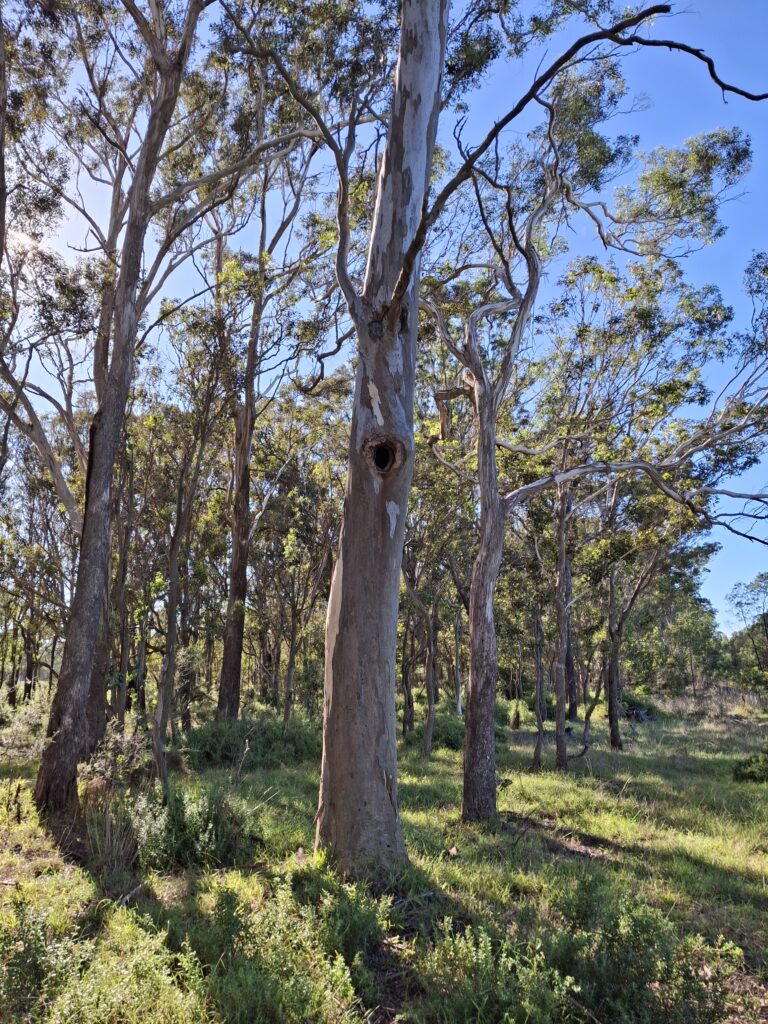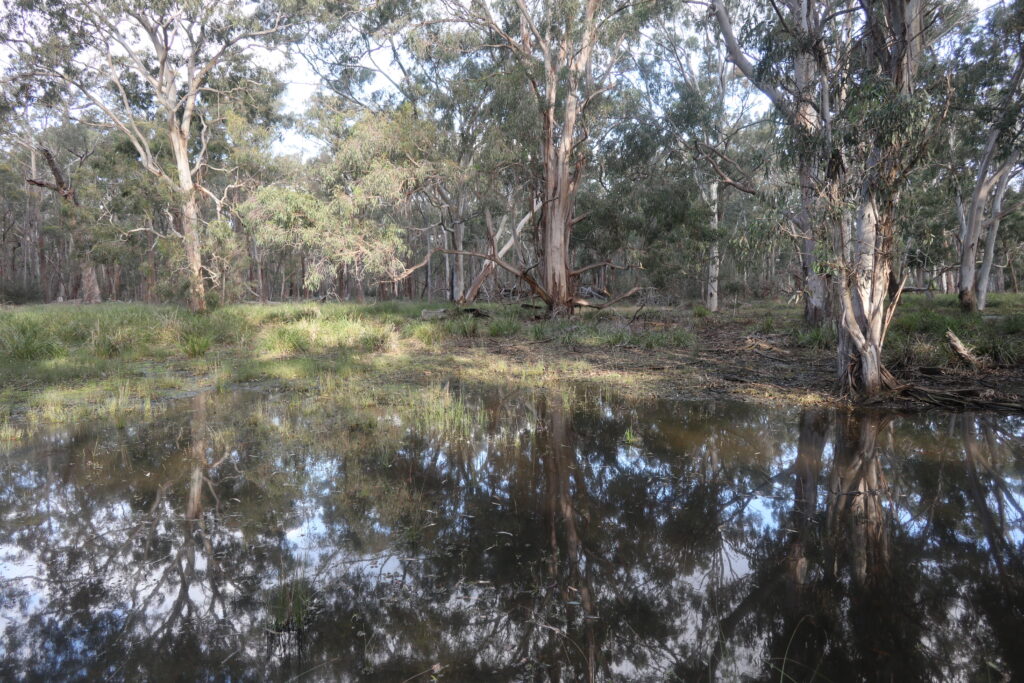The Gippsland Plains, extending from the Latrobe Valley in the west to Bairnsdale in the east, features some of the region’s most productive farmland.
Through having been extensively cleared for agriculture, the remnant native vegetation across the plain is scarce and highly fragmented (in 2007, 83% of patches were less than 10 ha). This remnant vegetation includes three communities that are considered to be critically endangered under the EPBC Act. For example, one of those communities, the Gippsland Red Gum Grassy Woodland and Associated Native Grassland ecological community, has less than five per cent of its original coverage, despite previously being the most common and widespread native vegetation in the area.
The two other EPBC listed communities found on the plain that are also listed as critically endangered are Seasonal Herbaceous Wetlands (Freshwater) of the Temperate Lowland Plains and White Box-Yellow Box-Blakely’s Red Gum Grassy Woodland and Derived Native Grassland. There are also many endangered flora and fauna species found on the plain.
Current Project – Restoring Gippsland Redgum Grassy Woodlands and Seasonal Herbaceous Wetlands
The East Gippsland Catchment Management Authority is coordinating a four-year conservation project for these ecological communities.
The focus areas of the project will include the Moormurng and Bengworden Reserves due to these areas containing some of the largest remnant patches of Redgum Woodlands. With smaller remnant patches being identified and targeted in the local area, to enhance the ecological community and build connectivity. There are currently 15 sites west of Bairnsdale on the Gippsland Plain around Moormurng and Bengworden Reserves, where conservation works are being undertaken by multiple partner agencies.
The aim of the project is for these ecological communities to show improvement in condition, connectivity and have increased long term protection of remnants through covenants. Activities planned to achieve habitat improvement include identifying and prioritising areas for protection, habitat condition surveys, collaborating with stakeholders, weed control amongst other activities. At the conclusion of the project there will be a landscape scale Management Plan which will guide and prioritise further conservation activities.
On ground delivery of conservation activities is being delivered by Traditional Owners and other environmental agencies. Extensive consultation with stakeholders (incl. Traditional Owners, NGOs and land management agencies, Landcare Networks) was undertaken for the project design, and consultation continues with an established steering committee.
This project is funded by the Australian Government Natural Heritage Trust and delivered by the East Gippsland Catchment Management Authority, a member of the Commonwealth Regional Delivery Partners panel.




